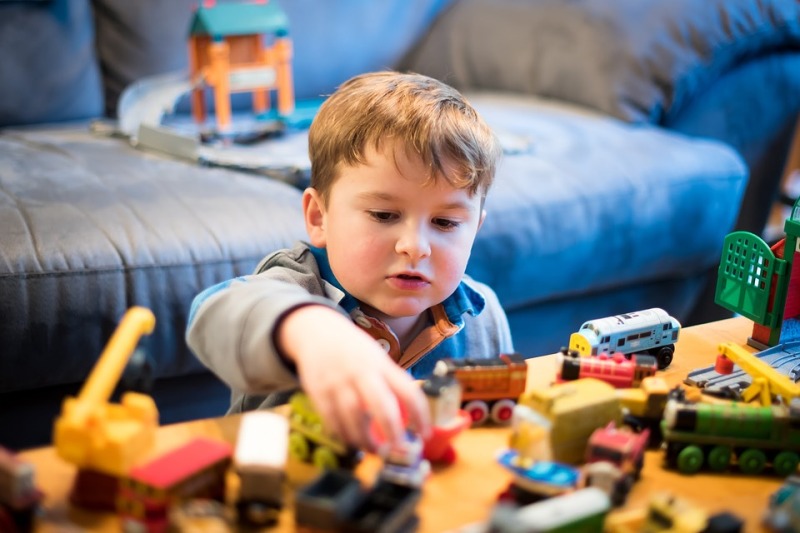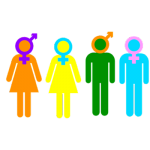Gender dysphoria is another one of those problems which aren’t discussed enough, which leads to a lot of misconceptions about it. Because it is more often than not shoved under the carpet and dismissed, not enough people know about it, which can lead to misunderstandings. They are unable to recognise the signs of gender dysphoria, and in case they are suffering from this condition, they cannot understand why they are feeling a certain way. Today, we are going to help you diagnose and deal with gender dysphoria.
Suggested read: 12 Essential Things You Should Know About Dating A Transgender Person
According to WebMD,
People who have gender dysphoria feel strongly that their gender does not match their biology.
For example, a person who has a penis and all other physical traits of a male might feel instead that he is actually a female. That person would have an intense desire to have a female body and to be accepted by others as a female. Or someone with the physical characteristics of a female would feel her true identity is male.
It is completely different from concepts like transgender, transsexual, bisexual, or other orientations that people confuse gender dysphoria with. However, feelings of depression, insecurity and self-esteem issues can also cause one to be dissatisfied with themselves. Even though one of the side effects of gender dysphoria can be depression and other psychological conditions, the actual thing is different from not liking yourself. Gender dysphoria occurs specifically when you cannot relate to the gender that you were assigned at birth.

Image source: Google, copyright-free image, under Creative Commons License
Here are a few signs and symptoms of gender dysphoria that can help you diagnose the problem accurately.
Symptoms of Gender Dysphoria
Because gender dysphoria does not have any physical symptoms, diagnosing the problem can become a little difficult. The signs can be divided into various categories, depending on factors such as the age of the person, the sexual orientation of the person, etc. While some of the signs are very obvious, some are more subtle and difficult to understand at first. Here are a few examples.
In children:
- They may refuse to participate in activities that are typically associated with their gender. For example, a boy may refuse to play aggressively with other boys, and instead want to do what the girls he is surrounded with are doing.
- Children often insist that they are actually of the opposite sex, if they are suffering from gender dysphoria. They may dress that way, mock the mannerisms of the opposite sex, and do everything to convince themselves and others that they are not what they were assigned at birth.

Image source: Google, copyright-free image, under Creative Commons License
- They tend to play with other children of the opposite sex, which is an uncommon trait at a young age. They don’t identify with their own gender, hence they are attracted towards the opposite gender for company and inspiration.
- They are highly uncomfortable with their genitalia. Girls may want to grow male genitalia, while boys may want to get rid of theirs. They also tend to behave as the opposite sex when they are doing things like urinating, because they are uncomfortable with the way their genitals work.
Suggested read: Sex And Gender Are Not Interchangeable Terms! Let’s Find Out More
In teens and adults:
- Teenagers who suffer from gender dysphoria are highly uncomfortable when their bodies go through changes during puberty. They are unable to come to terms with the masculine and feminine elements that start to become more obvious in their bodies.
- By the time someone is in their late teens, they know for sure that their biologically assigned gender is not something they identify with, and they would rather belong to the opposite sex.

Image source: Google, copyright-free image, under Creative Commons License
- One common symptom is the intense need to hide physical evidence of their gender. For example, women try to hide their breasts, while men don’t let their body hair grow, etc.
- They tend to bond more with and be more comfortable with people of the opposite gender, which is the gender they truly identify with. They seek out their company and pick up on their behavioral traits and do not subscribe to any of the gender stereotypes of their biological gender.
Subtle signs of gender dysphoria:
- Sometimes, the signs of gender dysphoria are not as obvious as it seems. Some of the subtler signs resemble those of anxiety, bipolar disorder and even depression. For example, people who suffer from undiagnosed gender dysphoria have trouble simply getting through the day without a feeling of discomfort. Even simple things like getting up from bed, dressing up and going to get groceries feel like a heavy burden.
- Some people also feel an overwhelming sense of purposelessness. They don’t find any meaning in life, don’t find enthusiasm in the tasks that they do and don’t relate to the things that other people in their social circle or age group are relating to.
- Feeling a sense of disconnect from everyone around you is also a symptom for gender dysphoria. All the observable traits of other people come across as “normal” while a person suffering from gender dysphoria would feel “abnormal” in similar situations.
How to Deal With Gender Dysphoria
The first and foremost thing you need to do is you have gender dysphoria is get professional help. Go see s doctor, go talk to a therapist, or just talk to anyone about your condition, so that you feel a little at peace with yourself.

Image source: Google, copyright-free image, under Creative Commons License
Apart from professional help, there are few things you can do in your day to day life, which will help you get through your days without hating yourself. But before that, it is important to remember that even though gender dysphoria is a problem, it is not a disease. It is not a “problem” as many people think it to be. It is a condition that is difficult to understand and therefore, often misinterpreted. No matter who you are, or what you want to be, step one is always to learn how to love yourself.
That being said, here are a few coping mechanisms that I found helpful, and hopefully you will too.
- Get a pet. It is in moments like this that you need unconditional love, and there is no better place to get it from, other than from an animal.
- Constantly reflect on the past. Map your progress and remind yourself on a regular basis that you have come really far compared to where you used to be. And it is only going to get better.
- Talk to someone who is going through the same thing as you are. This might be difficult, but meeting new people is now easier than ever. When you talk to someone who understands what you are going through, you don’t feel as alone.
- Find your coping mechanism. Whether it is a playlist, or movies or kickboxing, find something that brings you peace and whenever you feel disconnected from yourself, escape into your safe space.

Image source: Google, copyright-free image, under Creative Commons License
- Take time out every day for yourself. Use that time to reflect, to think about yourself and no matter what else you feel like doing during your “me” time, don’t forget to list down at least 3 things that you love about yourself and your body. Being completely honest with yourself and telling yourself what you love about your body is a great way to build self confidence.
- Write down your feelings. Writing is a very cathartic exercise, and you don’t have to be a poet to express yourself. Expressing what you have been feeling and thinking is like a physical release which helps your body relax and makes you feel better about yourself.
Suggested read: Making A Case For Blurred Gender Boundaries: In Defense Of Androgynous Freedom
- Find a role model. There is always safety in numbers. When you have someone you can look up to, you know that you are not alone. You can read up about their story and their struggle and whatever else about them inspires you, and try to emulate them in your own personal life.
- Avoid negativity. There are certain people and certain spaces which just make you feel bad about yourself because of the negative vibes. If you feel remotely uncomfortable somewhere or with someone, simply walk away. Nothing and no one is more valuable than you are, and you should not let anything compromise your relationship with yourself.
- Do things which make you feel fabulous. Gender dysphoria comes with a lot of self esteem issues, a lack of self confidence and body image issues. To combat this, you should seek out activities which make you feel good about yourself. You can hit the gym, practice a sport, practice martial arts, or indulge in other creative pursuits such as drawing and painting and music; whatever makes you feel good about yourself!
If you have been seeing the symptoms of gender dysphoria in you or in someone you care for, then it is not something that you should ignore. Do something about it. Treat it. Make yourself, and other people feel better about themselves.
Featured image source: Google, copyright-free image, under Creative Commons License













